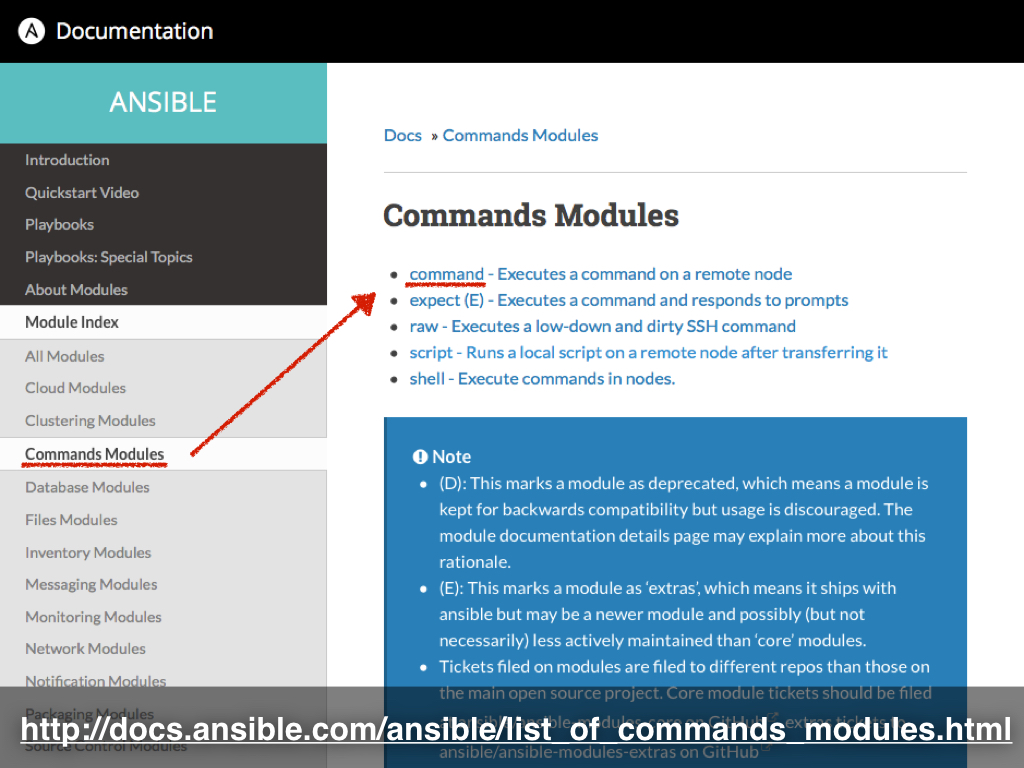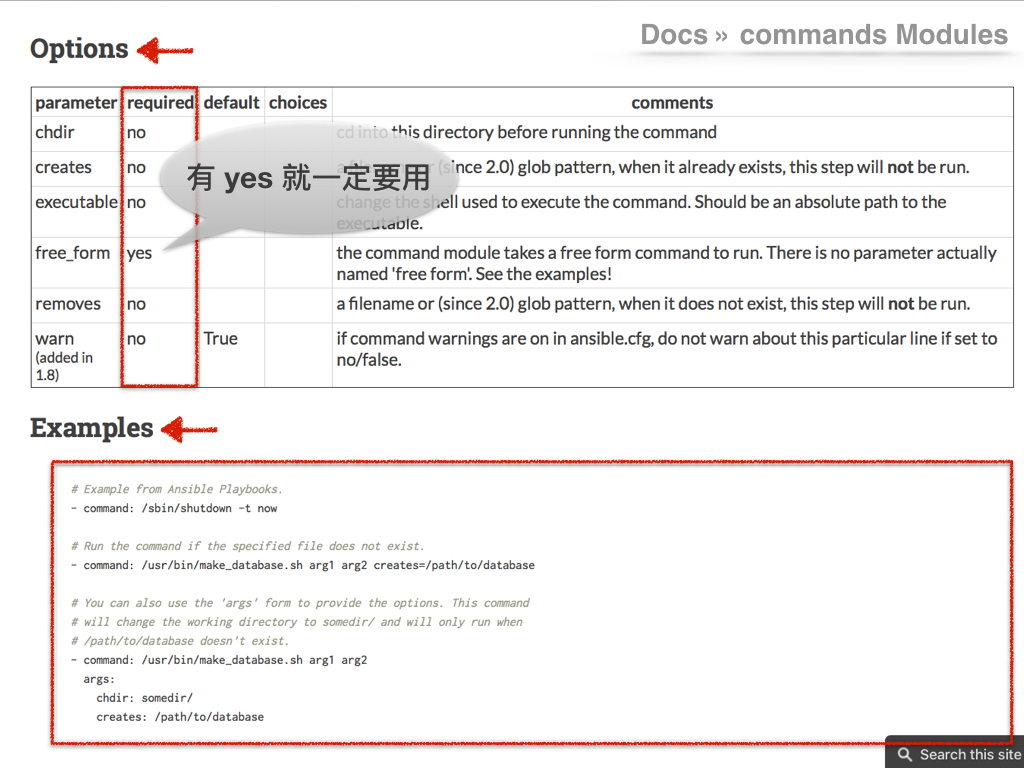Ansible 系列:
- (一):[快速上手 Ansible](./Ansible 快速上手.md)
- (二):[Ansible 命令](./Ansible 命令.md)
- (三):[Ansible 主机清单配置文件](Ansible 主机配置清单.md)
- (四):[Ansible Playbook 剧本语法](Playbook 剧本语法.md)
快速上手 Ansible
Ansible 是 Paramiko 开发的一种自动化运维工具,基于模块化工作,集合了众多运维工具的优点,实现了批量系统配置,批量程序部署、批量运行命令等功能。
Ansible 它本身没有批量部署的能力,真正执行这些操作的是 Ansible 的模块,它只是提供了一种框架。直到目前为止,Ansible 已有 800 多个模块可以使用。
Ansible 的另一个优势在于,它不需要在远程主机上安装任何东西,因为它是基于 SSH 来和远程主机进行通信的。
安装 Ansible
在 Ansible 里,有两种角色 Control Machine 与 Managed Node,它们通过 SSH 和 Python 进行沟通:
- Control Machine(主控端):操作 Ansible 的机器,用于操纵 Managed Node
- Managed Node(被控端):被 Ansible 操纵的机器
在一般情况下,我们只需在 Control Machine 里安装 Ansible 即可,因为 Linux 和 macOS 系统早已预载了 Python 2.5 以上的版本,且支持 SSH 连接。
而使用 Ansible 来管理 Window 的话,则需要较多的设置(此处不介绍,可自寻谷歌/百度)。
macOS 安装 Ansible
1 | 请先安装 homebrew,已安装者请略过 |
Linux 安装 Ansible
CentOS(Yum)
1 | 新增 epel-release 第三方套件来源。 |
Ubuntu(Apt)
1 | 安装 add-apt-repository 必要套件 |
使用 Pip 安装 Ansible
1 | 1、首先安装 pip |
Ansible 文件
在安装 Ansible 之后,你可以访问以下 Ansible 文件:
- /usr/bin/ansible :Ansible 命令行工具
- /usr/bin/ansible-doc :Ansible 帮助文档工具
- /usr/bin/ansible-playbook :Ansible 剧本执行工具
- /etc/ansible/ansible.cfg :主配置文件
- /etc/ansible/hosts :管理的主机清单
- /etc/ansible/roles :角色存放处
Ansible 操作之 Ad-Hoc Command 和 Playbook
Ad-Hoc Commands
第一种方式是通过向 Ansible 发送 Ad-Hoc Commands(指令)来操作 Managed Node。
以常见的 ping 和 echo 操作为例:
ping
1
2
3
4
5ansible all -m ping
server1 | SUCCESS => {
"changed": false,
"ping": "pong"
}echo
1
2
3ansible all -m command -a "echo Hello World"
server1 | SUCCESS | rc=0 >>
Hello World
Playbook
另外一种方式即通过 Playbook (剧本)让各个 Managed Node 进行指定的动作(Plays)和任务(Tasks),你可以理解为 Shell Script。
Playbook 支持两种写法 :
- YAML:简单易读
- Jinja2:模板化文件,支持变量、条件、循环语法
在一份 Playbook 中,可以有多个 Play、Task 与 Module:
- Play:目的
- Task:要执行的 Play 这个目的所需做的步骤
- Module:Ansible 所提供的模块来执行各种操作
下面是一个 Hello World 的 Playbook 剧本,剧本后缀名应为 .yml:
1 | - name: say 'hello world' |
执行剧本
1 | ansible-playbook hello_world.yml |
查看 Ansible 的 Modules
模块是 Ansible 的核心,也是操作真正的执行者,只要掌握了如何使用模块就可以快速上手 Ansible,其余都只是延伸使用罢了。
例如我们经常使用的 Command Modules 模块,你可以进入 Ansible 的 Module 帮助文档中找到它的使用文档。

文档中 Options 选项表会列出模块参数,参数的预设值等信息。

Setup 模块
在使用 Playbook 时,Ansible 会自动执行 Setup Modules 以收集各个 Managed Node 的 facts(系统信息),如 IP、作业系统、CPU 信息等。
我们也可以通过 Ad-Hoc Commands 指令模式使用 setup,例如:
1 | ansible all -m setup | less |
通过 filter 参数还可以过滤结果
1 | ansible all -m setup -a "filter=ansible_distribution*" |
通常在 Playbook 中我们会将主机信息结合条件判断 when 使用,例如下面针对 Debian, Ubuntu, CentOS 安装 Vim 的 playbook:
1 | - name: Setup the vim |